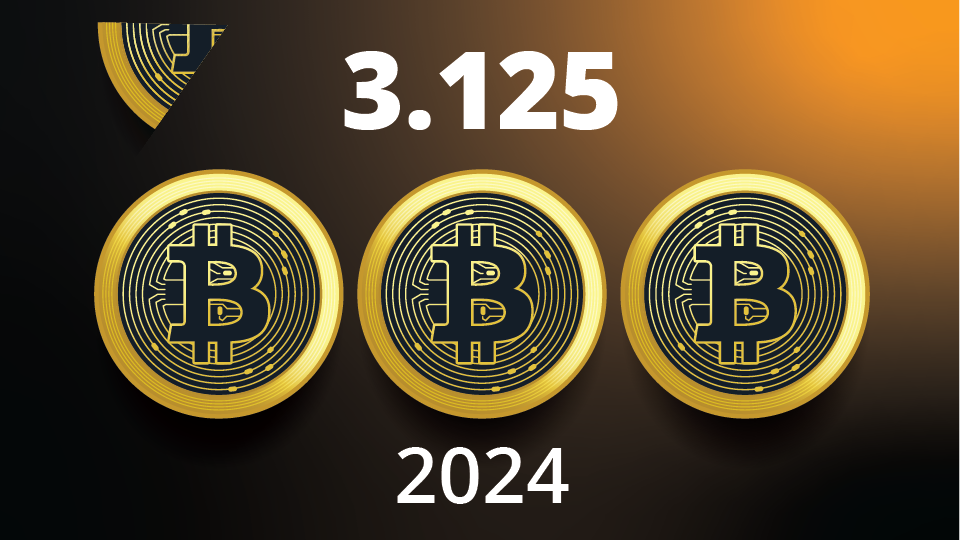EFUT ETF: Question & Answer
October 11, 2023
Read Time 10 MIN
Since its release in 2015, ether adoption has grown exponentially, with hundreds of millions of owners, and access provided by mainstream investment firms and payment applications. As Ethereum’s popularity and usage skyrocketed, investors have demanded access to this emerging asset via a more traditional wrapper, such as an ether ETF.
VanEck is proud to have played a key role in educating investors on the benefits of an ETF access vehicle for those wanting to participate in the Ethereum investment story. This blog answers frequently asked questions about the VanEck Ethereum Strategy ETF (EFUT) and about investing in Ethereum more broadly.
- Why should taxable investors consider EFUT?
- What differentiates VanEck Ethereum Strategy ETF from other methods of Ethereum investment available to U.S. investors?
- What are futures contracts?
- What makes up the total return of futures contracts?
- What is contango?
- What is backwardation?
- What are the benefits of ether futures?
- What are some drawbacks of ether futures?
- What is the relationship between ether futures and the underlying spot market?
- On which exchange are ether futures listed?
- What are the ether contract specifications?
- How are ether futures ETFs taxed?
- What is the difference between a RIC and a C-Corp as it relates to ETF tax structure?
- How can investors buy VanEck ETFs?
Why should taxable investors consider EFUT?
EFUT may be the preferred choice for taxable investors in ether futures ETFs because of its inherently efficient tax structure. While nuanced, the taxation differences can have a material impact on shareholder outcomes and are an important consideration for any taxable investor. Given that Ethereum is known not only for its dramatic price appreciation but also for wide price swings, investors looking for ether futures exposure may find that an ETF structured as a C-Corp may offer better after-tax returns.
The tax efficiency a C-Corp structure offers is realized by utilizing the carry forward and carry back of capital losses coupled with qualified dividend income (QDI) and dividends received deduction (DRD) eligible distributions, the one-year deferral of these distributions and the ability of the C-corp to permanently retain and reinvest long-term capital gains.
Under current U.S. tax law, the distributions made to taxable investors by ETFs that utilize a RIC structure lose their character as short and long-term capital gains and are treated as ordinary income for tax purposes whenever gains are earned in their Cayman subsidiary. Distributions from RICs attributable to gains earned by a Cayman subsidiary are not considered QDI or capital gains, meaning any distributions from the RIC would not be eligible to be taxed at lower capital gains rates. When distributions on that income are paid to investors, they are treated as ordinary income and are taxed at an investor’s highest tax rate.
C-Corps like EFUT are not required to distribute long-term capital gains and will only distribute 40% of the capital gains earned by the fund (less applicable federal taxes paid by the fund). This allows investors to defer tax at the individual level and ultimately retain more assets in the fund, thus maintaining greater exposure to the investment class.
Ultimately, EFUT and its C-Corp structure may be suited for long-term investors with taxable accounts. Investors are able to retain more assets continually in the fund, and may potentially experience notably better gains than their RIC counterparts.
What differentiates VanEck Ethereum Strategy ETF from other methods of ether investment available to U.S. investors?
The VanEck Ethereum Strategy ETF provides investors access to ether futures in an ETF wrapper, allowing both retail and institutional investors to participate in ether’s price action within the traditional, regulated ETF structure and available in brokerage accounts.
Three other ways that investors can currently access ether in the U.S. are described below, along with their respective drawbacks.
Direct ether investment:
- No clearing mechanism when purchasing ether directly. Purchases and sales inherently entail counterparty risk.
- There is no traditional custodian for ether. Direct ownership requires either self-custody, which creates operational risk and is impractical for many investors or storage with a third party, creating ongoing counterparty risk (i.e., counterparty risk extending through the entire life of the investment, not just the purchase or sale).
- Cannot be bought or sold in traditional brokerage or prime broker accounts; requires establishing an account with an exchange or OTC counterparty.
OTC listed vehicles:
- Over-the-counter (OTC) vehicles are traded directly between counterparties without being listed on an exchange.
- Many of the OTC listed vehicles do not allow for direct daily creation and redemption activity.
- Ether-focused OTC listed vehicles have historically experienced steep premiums, which means performance can deviate significantly from the price of ether.
- Liquidity is inherently limited and cannot easily increase because there are no continuous creates.
Crypto hedge funds:
- A hedge fund is a pooled investment fund that is able to make use of more complex trading and portfolio construction strategies. Generally speaking, hedge funds require a higher initial investment from investors when compared to ETFs, and may require a lock-up period for assets invested.
- Full reliance on the hedge fund to mitigate operational risk, counterparty risk, and custody concerns.
- No on-demand redemption, which may raise issues for institutional investors.
- Complex fee structures, which may include high performance fees.
What are futures contracts?
Futures contracts are financial instruments whereby two parties agree to buy and sell an asset of specific quantity at a predetermined price, and at a specific date in the future.
All futures contracts have a specified time at which they expire (expiry date). Prior to this date, traders have a number of options to either close out or extend their open positions without holding the trade to expiration, but some traders will choose to hold the contract and go to settlement.
Futures contracts allow investors to speculate on the direction of a security, commodity or other financial instrument. Futures can also be used to hedge the price movements of underlying assets to help prevent losses from unfavorable price changes.
Visit the fund page for the fact sheet, holdings, performance and more.
What makes up the total return of futures contracts?
The total return of futures contracts are made up of three components:
- Spot return: Measures the price movement of the underlying physical commodities.
- Roll yield: The positive or negative contribution caused by rolling the contracts from one futures contract to a longer-dates contract.
- Cash yield: Interest earned on assets held in cash, as collateral for futures contracts.
What is contango?
Contango occurs when the price of a futures contract is above the expected future spot price at the time the contract expires (i.e. futures prices are falling, seller benefits).
What is backwardation?
Backwardation occurs when the price of a futures contract is below the expected future spot price at the time the contract expires (i.e. futures prices are rising, buyer benefits).
What are the benefits of ether futures?
CME ether futures provide investors exposure to the price of ether without the need to hold the underlying asset. CME ether futures contracts are cash-settled and thus do not require investors to receive delivery of ether were contracts to expire without being rolled. Additionally, CME is regulated by the Commodity Futures Trading Commission (CFTC).
What are some drawbacks of ether futures?
Over the past few years, CME ether Futures markets have been in contango leading to negative roll yield, which leads to lower returns for the holders of ether futures contracts versus the underlying spot price of ether.
Rolling from front month contract to the next month when forward prices are higher will lead to negative roll costs.
What is the relationship between ether futures and the underlying spot market?
CME ether futures are based on the CME CF Ether Reference Rate (ETHUSD_RR), which aggregates ether trading activity across major ether spot exchanges between 3:00 p.m. and 4:00 PM London time.
On which exchange are ether futures listed?
Ether futures are listed and cleared on CME, a U.S.-Registered designated contract market (DCM) and derivatives clearing organization (DCO). CME is regulated by the Commodity Futures Trading Commission (CFTC).
What are the ether contract specifications?
Each ether contract on the CME represents fifty ether. The contract is priced in U.S. dollars and cents per ether, and uses the CME CF Ether Reference Rate (ETHUSD_RR) as the pricing source on the contracts.
How are ether futures ETFs taxed?
A fund built to invest in ether futures presents unique challenges that upend the typical way mutual funds and ETFs are structured. VanEck Ethereum Strategy ETF was built to be as cost and tax efficient as possible for long-term investors.
The typical mutual fund and ETF are structured as a Regulated Investment Company (“RIC”) for tax purposes. Assuming they satisfy certain conditions for diversification, types of income earned and distributions, any income earned is “passed-through” to shareholders to be taxed at the individual investor’s tax rate. Income and gains from ether futures are treated as non- qualifying income / gains for RICs by the Internal Revenue Service. In order for an ETF to qualify as a RIC, it must generate 90% of its income from qualifying sources.
Accordingly, RICs that invest in ether futures typically need to do so through a Cayman subsidiary in order to qualify as a RIC. Investing through a Cayman subsidiary allows the fund to treat the income and gains earned by that subsidiary as qualifying income for purposes of the RIC requirements even if those investments would not generate qualifying income if invested in by the fund itself. However, investing through a Cayman subsidiary results in other adverse tax consequences regarding how distributions and losses on ether futures are treated for tax purposes.
The alternative is to be classified and taxed as a corporation, a “C-Corp”. This obligates the fund to pay taxes at the entity level and at corporate tax rates instead of just passing all of its income and gains through to investors. A C-corp fund is also required to distribute its earnings from income and short term capital gains to shareholders in order to avoid additional layers of tax. However, there may be several benefits available to a C-Corp investor that may outweigh the impact of two-level taxation.
What is the difference between a RIC and a C-Corp as it relates to ETF tax structure?
While there are several differences between a RIC and C-Corp, those that impact taxation primarily fall into three categories:
- Fund level vs pass-through taxation: While C-Corps must pay corporate taxes at the fund level, RICs avoid this and pass through taxable distributions investors.
- Treatment of capital losses: A significant benefit to the treatment of C-Corps is their ability to carry forward capital losses to offset future investment gains. Similarly, in the event of a loss, a C-Corp can also reclaim taxes paid on gains in prior years. RICs that invest in ether futures through a Cayman subsidiary are unable to take advantage of this treatment, thus investors must pay current tax on all gains earned during years of positive returns regardless of losses from prior periods.
- Distributions: Both structures are required to make distributions, however a C-Corp may distribute income and short-term capital gains on a one-year lag and is not required to distribute earnings from long-term capital gains. Additionally, C-Corp distributions are Qualified Dividend Income (QDI) eligible and are taxed at the same rates as long-term capital gains. On the other hand, RIC distributions from income and gains on ether futures are taxed at investor’s ordinary income rates which can be as high as 37%. C-Corp distributions are also Dividends Received Deduction (DRD) eligible, meaning that corporations that invest in a fund that elects to be treated as a C-Corp may deduct 50% of its distributions from its income tax.
How can investors buy VanEck ETFs?
To receive more Digital Assets insights, sign up in our subscription center.
Related Topics
Related Insights
DISCLOSURES
The value of Ethereum (ETH) and the Fund’s ETH Futures holdings, could decline rapidly, including to zero. You should be prepared to lose your entire investment. The Fund does not invest in ETH or other digital assets directly.
The further development and acceptance of the ETH network, which is part of a new and rapidly changing industry, is subject to a variety of factors that are difficult to evaluate, the slowing, stopping or reversing of the development or acceptance of the ETH network may adversely affect the price of ETH and therefore cause the Fund to suffer losses, regulatory changes or actions may alter the nature of an investment in ETH or restrict the use of ETH or the operations of the ETH network or venues on which ETH trades in a manner that adversely affects the price of ETH and, therefore, the Fund’s ETH Futures. ETH generally operates without central authority (such as a bank) and is not backed by any government, ETH is not legal tender and federal, state and/or foreign governments may restrict the use and exchange of ETH, and regulation in the United States is still developing.
Futures Contract Risk. The use of futures contracts involves risks that are in addition to, and potentially greater than, the risks of investing directly in securities and other more traditional assets. The market for ETH Futures may be less developed, and potentially less liquid and more volatile, than more established futures markets. ETH Futures are subject to collateral requirements and daily limits that may limit the Fund’s ability to achieve its target exposure. Margin requirements for ETH Futures traded on the Chicago Mercantile Exchange (“CME”) may be substantially higher than margin requirements for many other types of futures contracts. Futures contracts exhibit “futures basis,” which refers to the difference between the current market value of the underlying ETH (the “spot” price) and the price of the cash-settled futures contracts.
This risk may be adversely affected by “negative roll yields” in “contango” markets. The Fund will “roll” out of one futures contract as the expiration date approaches and into another futures contract on ETH with a later expiration date. The “rolling” feature creates the potential for a significant negative effect on the Fund’s performance that is independent of the performance of the spot prices of the ETH. A market where futures prices are generally greater than spot prices is referred to as a “contango” market. Therefore, if the futures market for a given commodity is in contango, then the value of a futures contract on that commodity would tend to decline over time (assuming the spot price remains unchanged), because the higher futures price would fall as it converges to the lower spot price by expiration. Extended period of contango may cause significant and sustained losses.
An investment in the Fund may be subject to risks which include, but are not limited to, risks related to market and volatility, investment (in ETH futures), ETH and ETH futures, futures contract, derivatives, counterparty, investment capacity, target exposure and rebalancing, borrowing and leverage, credit, interest rate, liquidity, investing in other investment companies, management, new fund, non-diversified, operational, portfolio turnover, regulatory, repurchase agreements, tax, cash transactions, authorized participant concentration, no guarantee of active trading market, trading issues, fund shares trading, premium/discount risk and liquidity of fund shares, U.S. government securities, debt securities, municipal securities, money market funds, securitized/mortgage-backed securities, sovereign bond, ETH-related company, ETH-related concentration, and equity securities risks, all of which could significantly and adversely affect the value of an investment in the Fund.
Unlike traditional mutual funds that are structured as regulated investment companies for U.S. federal income tax purposes, the Fund has not elected and has no current intention to elect to be treated as a regulated investment company under the Code because the extent of our direct investments in Ether Futures would generally prevent the Fund from meeting the qualification requirements under the Code for regulated investment companies.
VanEck Absolute Return Advisers Corporation is registered with the CFTC as both commodity pool operator and commodity trading advisor, and is a member of the National Futures Association. The Fund is speculative in nature and involves a high degree of risk. An investor may lose all or substantially all of an investment in the Fund. Commodity futures generally are volatile and the Fund may not be suitable for all investors.
The Fund is classified for federal income tax purposes as a taxable regular corporation or Subchapter “C” corporation. As a “C” corporation, the Fund accrues a current and deferred tax expense. The deferred tax expense represents the future tax liability associated with the capital appreciation of its investments. The Fund’s accrued current and deferred tax liabilities, if any, will be reflected in its net assets value per share. An estimate of current and deferred income tax expenses/(benefit) is dependent upon the Fund’s net investment income/(loss) and realized and unrealized gains/(losses) on investments, and such expenses/(benefits) may vary greatly from year to year and from day to day depending on the performance of the Fund’s investments and general market conditions. Therefore, any estimate of current and deferred income tax expenses/(benefit) cannot be reliably predicted from year to year. Future actual income tax expense (if any) will be incurred over many years depending on if and when investment gains are realized, the then-current tax basis of assets and federal income tax rates, the level of net loss carryforwards and other factors. As such, current and deferred income taxes are not included in the total expense ratio, and the Fund’s actual total expense ratio may differ significantly.
Investing in cryptocurrencies comes with a number of risks, including volatile market price swings or flash crashes, market manipulation, and cybersecurity risks. In addition, cryptocurrency markets and exchanges are not regulated with the same controls or customer protections available in equity, option, futures, or foreign exchange investing. There is no assurance that a person who accepts a cryptocurrency as payment today will continue to do so in the future.
Investing involves substantial risk and high volatility, including possible loss of principal. An investor should consider the investment objective, risks, charges and expenses of a Fund carefully before investing. To obtain a prospectus and summary prospectus, which contain this and other information, call 800.826.2333 or visit vaneck.com. Please read the prospectus and summary prospectus carefully before investing.
© Van Eck Securities Corporation, Distributor, a wholly owned subsidiary of Van Eck Associates Corporation.
Related Funds
DISCLOSURES
The value of Ethereum (ETH) and the Fund’s ETH Futures holdings, could decline rapidly, including to zero. You should be prepared to lose your entire investment. The Fund does not invest in ETH or other digital assets directly.
The further development and acceptance of the ETH network, which is part of a new and rapidly changing industry, is subject to a variety of factors that are difficult to evaluate, the slowing, stopping or reversing of the development or acceptance of the ETH network may adversely affect the price of ETH and therefore cause the Fund to suffer losses, regulatory changes or actions may alter the nature of an investment in ETH or restrict the use of ETH or the operations of the ETH network or venues on which ETH trades in a manner that adversely affects the price of ETH and, therefore, the Fund’s ETH Futures. ETH generally operates without central authority (such as a bank) and is not backed by any government, ETH is not legal tender and federal, state and/or foreign governments may restrict the use and exchange of ETH, and regulation in the United States is still developing.
Futures Contract Risk. The use of futures contracts involves risks that are in addition to, and potentially greater than, the risks of investing directly in securities and other more traditional assets. The market for ETH Futures may be less developed, and potentially less liquid and more volatile, than more established futures markets. ETH Futures are subject to collateral requirements and daily limits that may limit the Fund’s ability to achieve its target exposure. Margin requirements for ETH Futures traded on the Chicago Mercantile Exchange (“CME”) may be substantially higher than margin requirements for many other types of futures contracts. Futures contracts exhibit “futures basis,” which refers to the difference between the current market value of the underlying ETH (the “spot” price) and the price of the cash-settled futures contracts.
This risk may be adversely affected by “negative roll yields” in “contango” markets. The Fund will “roll” out of one futures contract as the expiration date approaches and into another futures contract on ETH with a later expiration date. The “rolling” feature creates the potential for a significant negative effect on the Fund’s performance that is independent of the performance of the spot prices of the ETH. A market where futures prices are generally greater than spot prices is referred to as a “contango” market. Therefore, if the futures market for a given commodity is in contango, then the value of a futures contract on that commodity would tend to decline over time (assuming the spot price remains unchanged), because the higher futures price would fall as it converges to the lower spot price by expiration. Extended period of contango may cause significant and sustained losses.
An investment in the Fund may be subject to risks which include, but are not limited to, risks related to market and volatility, investment (in ETH futures), ETH and ETH futures, futures contract, derivatives, counterparty, investment capacity, target exposure and rebalancing, borrowing and leverage, credit, interest rate, liquidity, investing in other investment companies, management, new fund, non-diversified, operational, portfolio turnover, regulatory, repurchase agreements, tax, cash transactions, authorized participant concentration, no guarantee of active trading market, trading issues, fund shares trading, premium/discount risk and liquidity of fund shares, U.S. government securities, debt securities, municipal securities, money market funds, securitized/mortgage-backed securities, sovereign bond, ETH-related company, ETH-related concentration, and equity securities risks, all of which could significantly and adversely affect the value of an investment in the Fund.
Unlike traditional mutual funds that are structured as regulated investment companies for U.S. federal income tax purposes, the Fund has not elected and has no current intention to elect to be treated as a regulated investment company under the Code because the extent of our direct investments in Ether Futures would generally prevent the Fund from meeting the qualification requirements under the Code for regulated investment companies.
VanEck Absolute Return Advisers Corporation is registered with the CFTC as both commodity pool operator and commodity trading advisor, and is a member of the National Futures Association. The Fund is speculative in nature and involves a high degree of risk. An investor may lose all or substantially all of an investment in the Fund. Commodity futures generally are volatile and the Fund may not be suitable for all investors.
The Fund is classified for federal income tax purposes as a taxable regular corporation or Subchapter “C” corporation. As a “C” corporation, the Fund accrues a current and deferred tax expense. The deferred tax expense represents the future tax liability associated with the capital appreciation of its investments. The Fund’s accrued current and deferred tax liabilities, if any, will be reflected in its net assets value per share. An estimate of current and deferred income tax expenses/(benefit) is dependent upon the Fund’s net investment income/(loss) and realized and unrealized gains/(losses) on investments, and such expenses/(benefits) may vary greatly from year to year and from day to day depending on the performance of the Fund’s investments and general market conditions. Therefore, any estimate of current and deferred income tax expenses/(benefit) cannot be reliably predicted from year to year. Future actual income tax expense (if any) will be incurred over many years depending on if and when investment gains are realized, the then-current tax basis of assets and federal income tax rates, the level of net loss carryforwards and other factors. As such, current and deferred income taxes are not included in the total expense ratio, and the Fund’s actual total expense ratio may differ significantly.
Investing in cryptocurrencies comes with a number of risks, including volatile market price swings or flash crashes, market manipulation, and cybersecurity risks. In addition, cryptocurrency markets and exchanges are not regulated with the same controls or customer protections available in equity, option, futures, or foreign exchange investing. There is no assurance that a person who accepts a cryptocurrency as payment today will continue to do so in the future.
Investing involves substantial risk and high volatility, including possible loss of principal. An investor should consider the investment objective, risks, charges and expenses of a Fund carefully before investing. To obtain a prospectus and summary prospectus, which contain this and other information, call 800.826.2333 or visit vaneck.com. Please read the prospectus and summary prospectus carefully before investing.
© Van Eck Securities Corporation, Distributor, a wholly owned subsidiary of Van Eck Associates Corporation.




